The Art of Cody Perkins
by Stephen Goss
It’s a Sunday afternoon in April, the sun working hard to warm up the day and to announce the arrival of spring in Edmonton. I find Cody Perkins hard at work in his garage/workshop filling an order for a couple of dozen pipes he has been commissioned to craft and putting the finishing touches on some pipes for his much anticipated debut at Burlington-on-Whyte Tobacconists. Clad in coveralls, he pulls his safety glasses up onto his head and smiles broadly, welcoming me to his world, a man-cave he is completely at home in and which obviously brings him much pleasure.
An artisan is an old-world construct and while one thinks of artisans as primarily hailing from ‘old-world’ Europe, here I find myself – standing firmly in the heart of Canada’s prairie provinces – in the presence of an artisan. Cody is gracious enough to spend an hour or two with me and I find myself immersed in the esoteric and fascinating world of pipe carving.
Included here are some highlights of our conversation and I’m sure in scanning them you’ll begin to appreciate Cody Perkins – the artisan.
Cody, what inspired you to carve pipes?
I have worked with my hands all my life (Cody is a machinist by trade) and while I love working in metal I also love working with other materials, especially wood. Carving a pipe (or making an ashtray/pipe tamper/cigar tube/matchbox) is just a natural extension of who I am. I am a pipe smoker and having visited pipe shops and pipe factories all over the world I just decided to try crafting a pipe for myself. When I had completed my first pipe, things just snowballed from there. A friend asked me to craft a pipe for him too, and then another friend and another… I began experimenting with different bowl shapes and variable stem treatments and there you have it.
Many of your pipes are quite intricate. How long on average does it take you to carve a pipe?
The most basic pipe, in a simple but classic shape, will take me 8 – 10 hours of work. However, I love crafting unique “one-off” pipes whose stem work will take me 8 – 10 hours just by itself, let alone the time spent on shaping the bowl and on other finishing processes. In broad terms, I spend about a third of my time on the ‘stummel’ (block of briar), a third on the stem, and a third on finishing and bringing these two elements together so they make a pleasing whole.
I’m surprised that a third of your time is spent on the stem! How important is the stem work on a pipe? Why don’t you just buy commercial stems and fit them to your creations?
When I initially look at a pipe that I’m considering purchasing in a pipe store, I look at the stem first. If it’s obvious that not a lot of care has gone into the crafting and fitting of the stem, then I’m not going to be very confident in the bowl either. To me, even more energy needs to be spent on considering the design elements of the stem and on making sure it fits integrally with the pipe as a whole, than on any other aspect of the pipe. I spend a lot of time ensuring that the stem looks like it’s a natural extension of the pipe.
Where do you get your inspiration for each bowl you carve?
There are two different ways I determine what the relative characteristics of the bowl will be. One method I use is to scrutinize the block of briar I’m working with and see what bowl-shape it suggests. I may even wet the block down a little so I can more readily see the grain of the wood and then go from there. Or, I’ll already have a design idea in mind and then will search out the block of briar that looks like it will accommodate it.
Pipe making is currently a hobby for you. Do you ever see it becoming more than that?
Right now I am thoroughly enjoying the “hobby-aspect” of pipe making. Friends or friends of friends have commissioned most of my pipes. I have sold a few on the Internet but I like knowing that my pipes are going to be enjoyed locally. That’s why I approached Chris over at Burlington’s to see if he’d be interested in selling my pipes in his shop.
Pipe making has been an evolutionary enterprise for me and I’m tickled that more and more people are engaging with my pipes. I am finding that there is more and more demand for Cody Perkins pipes and who knows, maybe someday pipe making will be more than a hobby for me!
You mentioned approaching Burlington-on-Whyte Tobacconists with a proposal to carry your pipes. What drew you to them as opposed to any other tobacconist?
I am an Edmonton pipe carver and Burlington is an Edmonton tobacconist. It also happens to be a business with an amazing track record when it comes to the enjoyment of pipes and pipe paraphernalia. More pipes are sold to and appreciated by loyal Burlington clients than any other tobacconist I know of in Canada.
When you enter the establishment there is a real “at-home” feel to it; the atmosphere is convivial and welcoming. And – no little thing – the staff is exceptionally knowledgeable. Any of them can talk to you with authority about pipes, cigars, tobacco and all things related.
Cody Perkins will be launching his pipes at Burlington-on-Whyte. Be sure to take advantage of this special opportunity to purchase one of this artisan’s one-of-a-kind pipes. One day you may be able to pull out a ‘Perkins’ and tell your grandkids, “I was at Burlington’s all those years ago when Cody launched his line of pipes and this was one of the first to be had!”
Cody Perkins – BIO
I grew up on a small farm in Saskatchewan, where my father was a knife maker, I have since relocated to Edmonton, Alberta. As a young child, I spent hours tinkering in my father’s workshop while he diligently made knives and as a result I developed an interest in design and fabrication early on. At 14 years old I made my first knife and began selling them to the local guided hunters.
Later on in high school, I was introduced to the trade of machining in a shop class and immediately fell in love with the ability to create practically anything I imagined out of metal. I am naturally detail-oriented and was eager to learn how to express this characteristic using metal. I landed my first job as a Machinist apprentice mere months after discovering the trade and have worked as a Journeyman Machinist ever since.
Pipe smoking became a hobby for my friends and I as young adults and eventually, after many smoke nights, a friend challenged me to make my own pipe. Excited by the idea of crafting my own pipe I began sourcing materials. I started with a small order of briar and a mixed bag of pre-molded vulcanite stems. My first pipe was a simple billiard with a brass band between the stem and pipe shank. My friends were impressed by the finished product and soon began ordering my hand made pipes for themselves.
Ever since that first pipe, I have been absorbed by the story every block of briar has within it and my desire to tell it. The beauty of working with organic material, such as briar, is its unpredictability. I begin by studying the details of the briar block by examining its size, shape, and grain structure. Once I have a vision of what may lie within the block I begin my work. However, unlike steel, where I have a blueprint that does not allow for any deviation, the briar itself dictates the final outcome and I never truly know what the finished product will be.
I have long since moved passed using pre-formed stems and now only hand-cut each individual stem to suit every pipe. Every piece found within one of my pipes has been hand-cut from the raw material. No pre-made stems, bands, or inserts are used. In my pipes you will frequently find materials including Italian briar, bone, horn, antler, exotic hardwoods, ivory, vegetable ivory, German ebonite, Lucite, acrylic, Delrin, brass, and aluminum.
The variation in the grain, and the creative process are what I enjoy most about the art of pipe making. Every one of my pipes is original and unique in its own way. I am very meticulous with the quality of my pipes and you will not find any filler or bowl coats that are often used to disguise imperfections. My pipes are of a high quality, and I would not create a pipe that I would not buy myself.
For me, creating each pipe is an exciting journey as the work unfolds, and an excellent showcase of creativity and fine craftsmanship. I look forward to the years of pipe making that lay ahead and the adventure the briar takes me on. To any of those who add my work to their collections, I hope the stories I’ve been able to create out of my pipes add to your enjoyment as you tell yours.
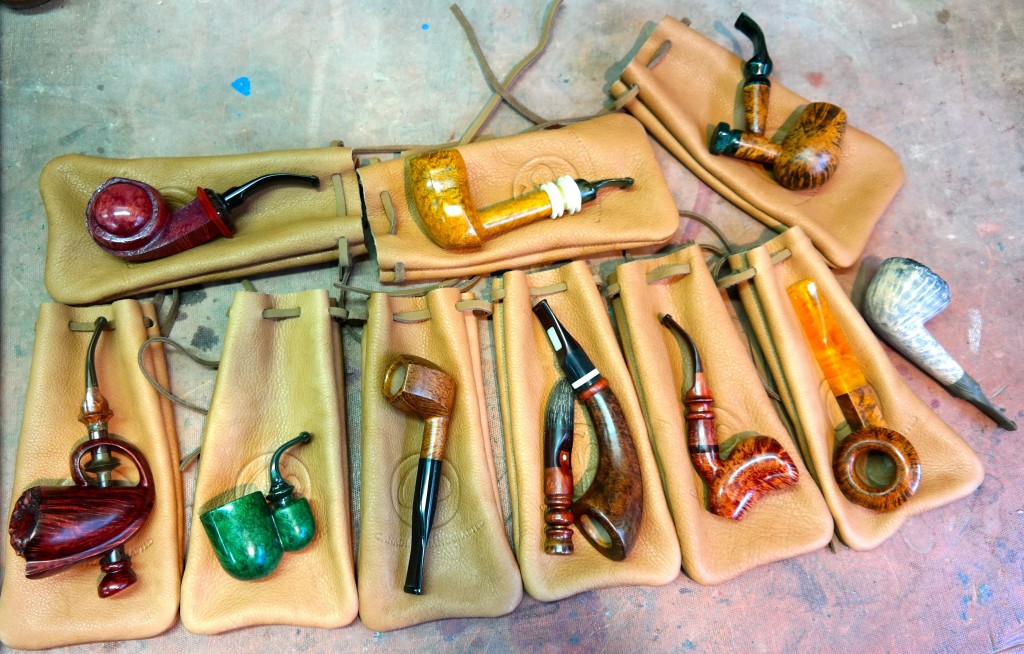
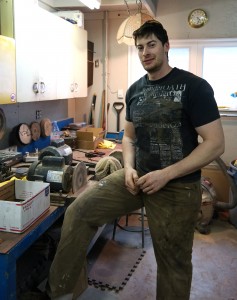
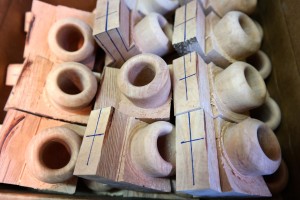

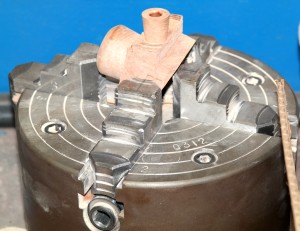
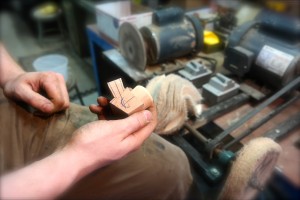
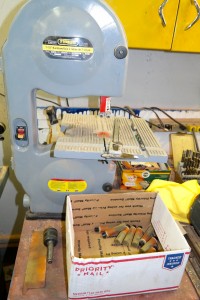
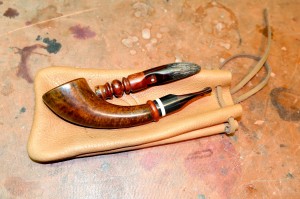
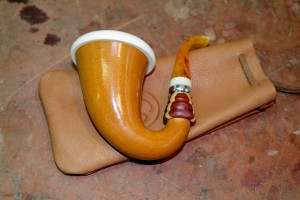
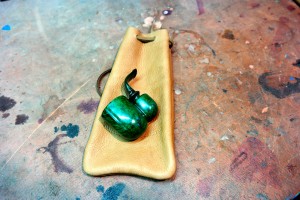
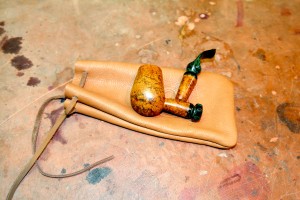
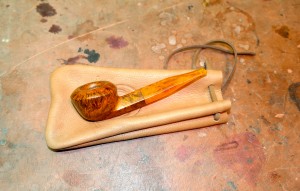

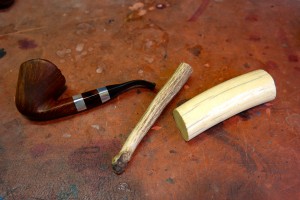
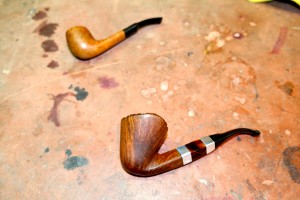
How can I contact Cody directly? Phone number please…..thanks,
Peter
Edmonton
Hello Peter. Cody can be contacted via email at cppipes@gmail.com